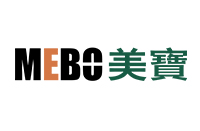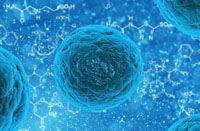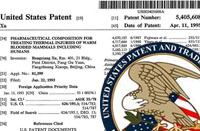Declaration--- For the dignity of life science
Recently, the scientific community hailed a team of researchers from University of Wisconsin-Madison who reported that they reprogrammed human somatic cells to pluripotent stem cells that exhibit the essential characteristics of embryonic stem cells, termed “iPS cells” (Yu et al. Sciencexpress, Nov. 20, 2007) [1]. A researcher team led by Shinya Yamanaka at Kyoto University also reported similar results showing that mouse and human somatic cells can be induced to be like embryonic stem cells (Takahashi et al. (2006) Cell 126, 663; Takahashi et al. (2007) Cell, doi:10.1016/j.cell.2007.11.019) [2-3]. However, the researchers cautioned that “It is important to understand, however, that before the cells can be used in the clinic, additional work is required to avoid vectors that integrate into the genome, potentially introducing mutations at the insertion site” (Yu et al. supra, p. 30).
However, as a researcher in this field, while praising the achievements made by these research groups, I must point out that the research results obtained by the Wisconsin and Kyoto teams actually confirm our long-advocated theory that somatic cells in an adult’s body can be activated or induced to behave like pluripotent or multipotent stem cells. However, the key to clinical successes is to activate the somatic cells safely and efficaciously in vivo so as to regenerate organs of the body to reduce disease and prolong organ life in the body.
For over 20 years, We have focused on developing safe and efficacious therapy for the regeneration of the body, starting from the skin of burns patients, and expanding to the gastrointestinal tract, pancreas, bone marrows, nerves, and other tissues and organs. By using Moist-Exposed Burn Ointment (MEBO) made from natural substances, in 1989, we, for the first time, demonstrated that on the wounds of deeply burned patients, MEBO can induce the residual live somatic cells to behave like embryonic stem cells in vivo and in situ to heal the deep burn wound without scar formation, which arose the tremendous response in the field [4]. In 1989, American Burn Foundation sent a burn experts delegation and medical delegations for a visit, when we made a public designation of this kind of cells as regenerative cells. American president Bush wrote to the Minister of Health of P.R.C. through officials, requiring the support and introduction of MEBO technique [5]. In May 7th, 1990, American magazine News Week published a news report entitled “A Simpler Way to Save Lives” with the subtitle being “Could a new medication from China change the world’s approach to treat burn injuries? [6-7] In October of 1990, Thailand government invited me to rescue the group of burn patients. Having achieved clinical regenerative reparation of the deep burn wounds, Thailand government and King sent the acknowledgement letter to Chinese government and worldwide media made rebroadcasts and reports on this issue simultaneously [8].
Later on, on the wounds treated with MEBO, embryonic epidermal stem cells expressing the marker keratin-19 (K-19) were specifically detected by using immunofluorescence techniques and the levels of K-19 expression corresponded to the dynamics of the skin regeneration, resulting in physiological regeneration of new skin without scars [9]. Extensive and compelling clinical evidence based on the successful treatment of near a million burn patients in China [10-11] and other countries has been documented in thousands of articles and highlighted in his Book entitled “Burns Regenerative Medicine and Therapy” published by Karger Publishers, Switzerland, 2004 [12]. In particular, in this book I elucidated and schematically illustrated the fundamental principles of tissue/organ regeneration by inducing somatic cells to become PRCs (see “Introduction”, pp. 5-12), and how to apply the principles to the regeneration of not just the skin organ, but also all other tissues and organs of the body.
I have also applied for worldwide patent protection and been awarded with numerous patents in the US, Europe, Japan and China, such as US Patent No. 6,991,813 [13] entitled “Physiological tissue repair and functional organ regeneration by cultivation of regenerative stem cells in vivo and in situ” filed on June 28, 2001; US Patent No. 6,685,971 [14] entitled “Method and composition for repairing and promoting regeneration of mucosal tissue in the gastrointestinal tract” filed on October 30, 2001; and US Patent No. 6,972,195 [15] entitled “Composition and method for culturing potentially regenerative cells and functional tissue-organs in vitro” filed on December 31, 2002.
Based on the clinical successes, we went back to basic cell biology and monitored how adult somatic cells behaved in culture in the presence of the MEBO substances. To our surprise, somatic cells isolated from animals could also be induced in vitro to act like stem cells. More surprisingly, the cells proliferated and directionally differentiated to form tissues with substantially the same physiological structure and function as the corresponding ones existing in vivo and in situ.[16-17] To differentiate these cells from normal adult stem cells such basal epidermal stem cells, we coined these cells “potentially regenerative cells (PRCs).”
As stated in my patent, US Patent No. 6,972,195 [15] (the corresponding application published as US20040063205 on April 1, 2004), I believe that PRCs exist in virtually every tissue and organ of the body and may not need specific "niches" to be tucked away. In vitro experiments conducted by our team showed that in all of the tissues isolated from mammals PRCs were identified and able to be activated, proliferate continuously and directionally differentiate to produce various tissue cells that eventually form functional "tissue-organs.” [18] Compared to the studies conducted by the Wisconsin and Kyoto teams, in practice, our approach does not require genetic engineering of the cells by transferring of multiple exogeneous genes into the cells via viral vectors.
Our approach is also distinguished from the others in that the cells in the presence of the MEBO substances do not differentiate chaotically to form tumor-like cell masses. Instead, our differentiation follows a lineage specific to the site of the body where the PRCs are originally isolated from. Such a path is clearly illustrated by the formation of the intestinal villi from small intestinal cells isolated from normal human intestines disposed of after surgical operations [16]. In the presence of the MEBO substances, single, isolated adult intestinal cells proliferated and directionally differentiated to epithelial cells, goblet cells, Paneth cells, and endocrinal cells which adhered to each other to form the distinct brush-like structure of intestinal villi. Such studies are well-documented in my US patent publication No. 20040063205. [15] The PRCs are originated from ordinary normal somatic cells and yet can be induced to behave like multipotent stem cells.
What is more significant is the successful clinical applications of the MEBO substances to regenerate tissues or organs damaged by injuries or diseases in the clinic [10, 19]. For example, ulcerative lesions of the intestines of patients were treated with an oral formulation of the MEBO substances and new intestine lining were regenerated without scar formation on the lining which are usually the results of using anti-ulcer drugs on the market.
Apparently, our team is already enjoying clinical successes by harnessing the power of regenerative somatic cells for the regeneration of human tissues and organs in vivo and in situ, while others are still searching for ethical, viable, and safe stem cells to be transplanted to the body hoping that the cell transplants will survive and carry out the desired functions in vivo.
Xu, Rongxiang
2007-12-05
Link://m.327512.com/en/declaration2007/








